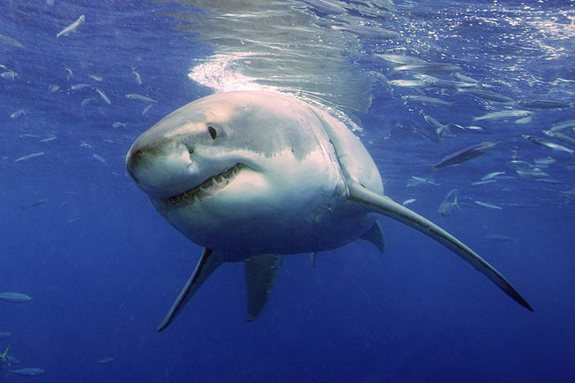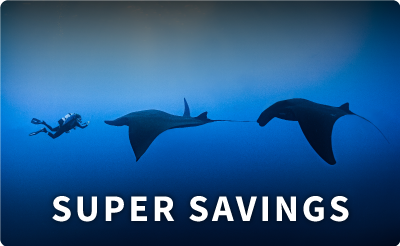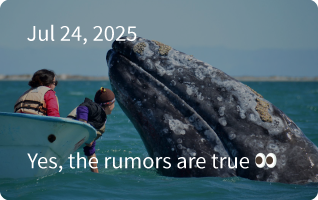
Although it’s a relatively rare occurrence, great white sharks have occasionally been sighted near the Hawaiian Islands throughout history (and even prehistory — teeth from white sharks have been found in artifacts from ancient islanders).
The small number of sightings and lack of young sharks seen, however, suggests that there isn’t one group of sharks that lives in the region, and that the animals that have been spotted are drifters who have wandered far from their native waters. But whence do they come?
A recent study compiled all records of great white shark sightings around Hawaii in modern history — a total of 13 — and all published reports of satellite-tracked sharks that reached the region, a total of 22. By comparing the records with data from tracking studies, it appears the sharks most likely come from the population centered in the eastern Pacific, along the west coast of Mexico and the United States.
Scientists came to that conclusion after noting that all of the sharks seen in the fall around the Hawaiian Islands are female. That matches the life history of the great white sharks in the eastern Pacific. Female great white sharks from this group complete a two-year migration from Guadalupe Island, Mexico, where they mate, after which they roam far and wide into the Pacific, before returning to Baja California to give birth to pups (after which they go back to Guadalupe Island). Males, on the other hand, complete a one-year migration from the island, and thus wouldn’t be around in the fall.
There is also a population of great white sharks centered near Japan that could reach the Hawaiian Islands, but the scientists found no evidence for that in the study, published recently in the Journal of Marine Biology.
Modern records of great white sharks “date back to May 1926, when the remains of a man who apparently drowned in waters of Haleiwa, Oahu, were recovered 16 days later in the stomach of a large shark landed” nearby, the authors wrote in the study. The man, a soldier, was identified primarily by his swim trunks, which were issued by the U.S. Army.
“We learned that [great] white sharks occur in Hawaii across a broader part of the annual cycle than previously thought — we recorded observations from every month except November,” said study author Kevin Weng, a researcher at the University of Hawaii – Manoa, in a statement from the school.
Email Douglas Main or follow him @Douglas_Main. Follow us @OAPlanet, Facebook or Google+. Original article on LiveScience’s OurAmazingPlanet.
http://www.livescience.com/29014-great-white-sharks-hawaii.html








